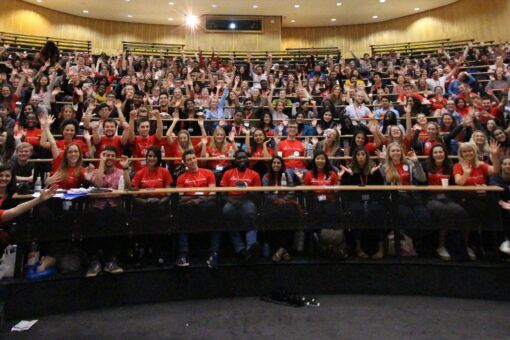
I hadn’t heard of StreetDoctors before I started a six month placement with them, on secondment from the Civil Service. What I found when I started was a tiny organisation (currently employing the equivalent of 2.7 full time employees) in a tiny office (barely big enough to fit the 2.7 employees when they all show up at the same time). So how did this tiny organisation manage to teach emergency lifesaving skills to nearly 2,000 young people at risk of violence in the last year alone?
The answer came a few weeks after I started in post, following a six hour drive to the StreetDoctors annual conference in Leeds in a mini-van full of StreetDoctors t-shirts, programme brochures, resuscitation dolls and bottles of Ribena (a teaching prop representing blood). 250 volunteers travelled the length and breadth of the country to attend the two day conference. As I watched the volunteers not only learn how to teach sessions, but also shape the direction of the organisation through their active contribution to discussions about communications, safeguarding and the prevalence of youth violence, I started to see how this charity is able to achieve so much with so little.
I know that charities rely on volunteers, but I’d rarely seen volunteers so actively involved in the delivery of a charity’s core work in this way. StreetDoctors’ volunteers – all full time medical students or junior doctors, who fit their volunteering around their already packed schedules – are all responsible for building relationships with delivery partners and teaching the young people who show up to sessions.
So it’s clear that this charity wouldn’t exist without the young people who deliver its teaching. And the reason that StreetDoctors exists is to educate and empower another group of young people – those who have been involved in violence, or are considered at risk of being involved.
They come to the teaching sessions to learn what to do in a medical emergency, and in the process reflect on the impact of violence and the repercussions of being involved in it. I’d expected them to be intimidating but I was wrong. Many of these young people are still just children, in spite of the fact that they’ve often experienced things that no-one of their age – of any age – should have to experience. They laugh at inappropriate moments and they’re squeamish when shown images of knife wounds. They’re sometimes vulnerable, often intelligent and articulate, and incredibly brave in the face of the violence and loss that is a normal part of life for many of them.
So what will I take away from my time at StreetDoctors? That behind the statistics about youth violence are people whose lives are shattered by it; that much of what we experience in life is down to the circumstance of where we’re born and where we live; and that it is incredibly important that organisations like StreetDoctors do their bit to make life better and safer for everyone. And finally, that if you have people who are focused on their job and share a common vision of what they’re trying to achieve, you can do a lot with a little.
Madeline Lasko (Communications Officer, StreetDoctors)
